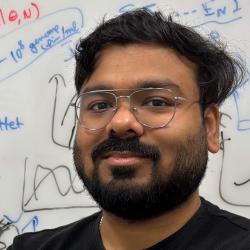New Complex Helps Attract Nation's Top Physicists to JQI
From a scientific perspective, Joint Quantum Institute (JQI) Co-director Charles Clark attests that the PSC labs offer “the best space available for quantum measurement.” That space translated into a tremendous advantage for JQI in its recent recruitment of the nation’s top two experimental condensed matter physicists to UMD.
In 2014, Vladimir Manucharyan, a junior fellow in the Society of Fellows of Harvard University, and James R. Williams, the Karl van Bibber Postdoctoral Fellow in the Department of Physics at Stanford University, will join JQI. “Jimmy and Vlad were arguably the top two candidates in their field in the last year, and it is a significant accomplishment that we could attract them to UMD in the face of extremely tough competition with top-tier universities in the country,” says JQI Co-director Steve Rolston.
When making his decision to accept a position at JQI, Manucharyan cited the expertise of current faculty members in quantum information science as well as the PSC’s technical superiority and enhanced lab space as important factors. Williams agrees, “To do the best physics, you need the best facilities, there’s no way around it.” Williams also attests to the benefits of locating JQI researchers in close physical proximity. “There is a certain ambition among young researchers, a youthful energy here. We believe we can dominate this field.”
Manucharyan received his Ph.D. from the Department of Physics at Yale University. Prior to his appointment at Harvard, he was a research assistant at Yale and the Landau Institute for Theoretical Physics. “My research is related to harnessing the quantum- mechanical behavior of microscopic objects, such as electrons in atoms, to store and process information more efficiently than macroscopic, classical computers,” he explains. At Harvard, he provided evidence that controlled manipulations of superconducting quasiparticles may be possible in the near future.
Williams received his Ph.D. in applied physics from Harvard University. As a postdoctoral researcher at Stanford, he managed a team pursuing research on two-dimensional materials where electrons elude conventional make-up and can take on more exotic forms: complex oxide materials, topological insulators and graphene. His work furthered the investigation of unconventional behavior of superconducting devices based on a topological insulator.







